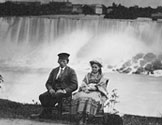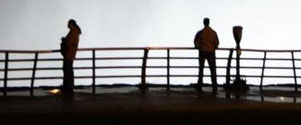

|
||||||||||||||||||||||||||||||||||||||
|
|
||||||||||||||||||||||||||||||||||||||
 |
 |
 |
 |
 The Telegraph Connection Ask most school children and they could tell you that Samuel Morse “invented” the telegraph and sent his famous “What hath God wrought” message from Washington to Baltimore in May of 1844. What probably few remember is that Niagara County was the scene of the second telegraph line in the United States, completed in 1845. Soon after the success of Professor Morse’s first commercial telegraph, a telegraph line was constructed in Lockport running along Transit Road to the area of Williamsville and then on to Buffalo. It began carrying messages in November of that year and relayed the election results in Lockport to Buffalo. This line eventually became part and parcel of a nationwide network of telegraph lines that connected every city and state. The area’s first telegrapher was George H. Boughton, who was also Lockport’s first postmaster, appointed in 1822 by President Monroe. The telegraph office was located in Boughton’s store on Canal Street. With the growth of the telegraph, there was a similar rise in the profession of telegraphy. Originally a male bastion, telegraphers became an elite corps of highly skilled “wordsmiths” that performed a great public service. So it was very unusual that one area woman became a leader in the telegraphic field. Mary J. MacCaulay began working at the age of 13 in the Leroy, NY telegraphic office of the New York Central Railroad. This was a career she would enjoy for over 44 years, and one that would take her to one of the highest national offices of the Telegraphic Union. She worked in Lockport at the Union, Sun & Journal from 1902 to 1914 and then continued in the city as an Associated Press operator, handling 15,000 words per day.
Douglas Farley, Director |
|